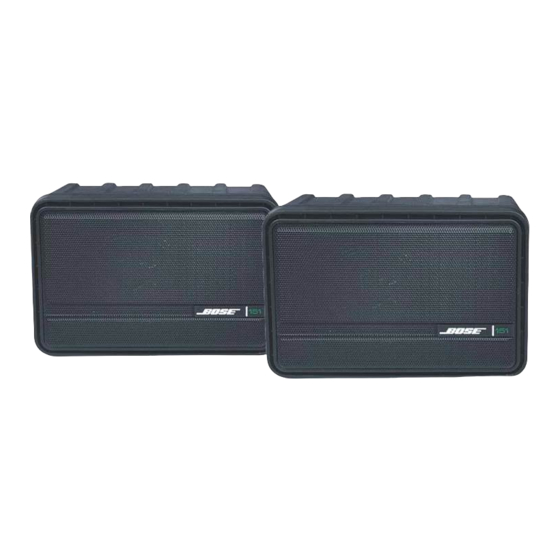Bose 151 Manual de servicio - Página 2
Navegue en línea o descargue pdf Manual de servicio para Altavoces Bose 151. Bose 151 11 páginas. Environmental
También para Bose 151: Manual del usuario (12 páginas), Manual del usuario (19 páginas)

Test Procedures
NOTES: In each test procedure, it is necessary to remove the grille to access the driver.
Refer to the Grille Removal procedure.
Polarities are not marked on the input terminals of the 151™ speaker. The red terminal is
the positive (+) terminal and the black terminal is the negative (-) terminal. See Figure 1.
1. Rub and Tick Test
A. Connect a sine wave oscillator to a power amplifier. Adjust the frequency of the oscillator
to 10 Hz and the amplifier output to 6 Vrms. Connect the amplifier output to the input
terminals of the 151 speaker (see Figure 1). No extraneous noises such as rubbing,
scraping or ticking should be heard.
NOTE: To distinguish between normal suspension noise and rubs or ticks, displace the
cone on the driver slightly with your fingers. If the noise can be made to go away or get
worse, it is a rub or a tick and the driver should be replaced. If the noise stays the same, it
is normal suspension noise and the driver is fine. Suspension noises will not be heard with
program material.
2. Sweep Test
A. Sweep the oscillator from 10 Hz to 3 kHz using the 6 Vrms signal. There should not be
any loud extraneous sounds. (Note: A "whooshing" noise from the port at approximately 80
Hz is acceptable). If there are any loud buzzes or distortion, replace the driver. (See
Disassembly/Assembly Procedures for instructions on replacing the driver).
NOTE: There should not be any buzzes or rattles from within the speaker cabinet. Redress
any wire or component that buzzes.
B. Reduce the amplifier output to 3 Vrms and continue sweeping from 3 kHz to 15 kHz. If
there is any buzzing or distorting,replace the driver (see Disassembly/Assembly
Procedures for instructions on replacing the driver).
1
